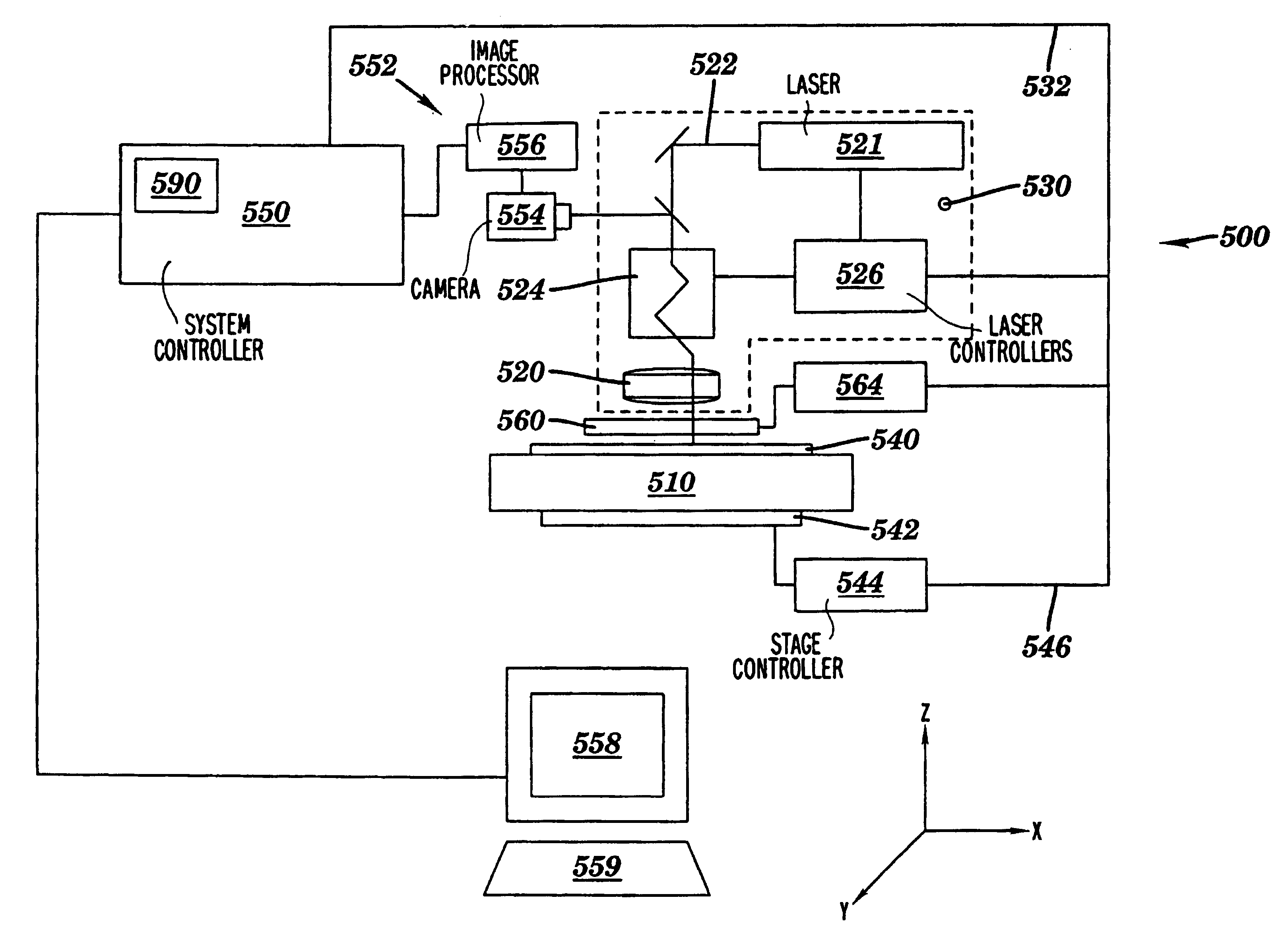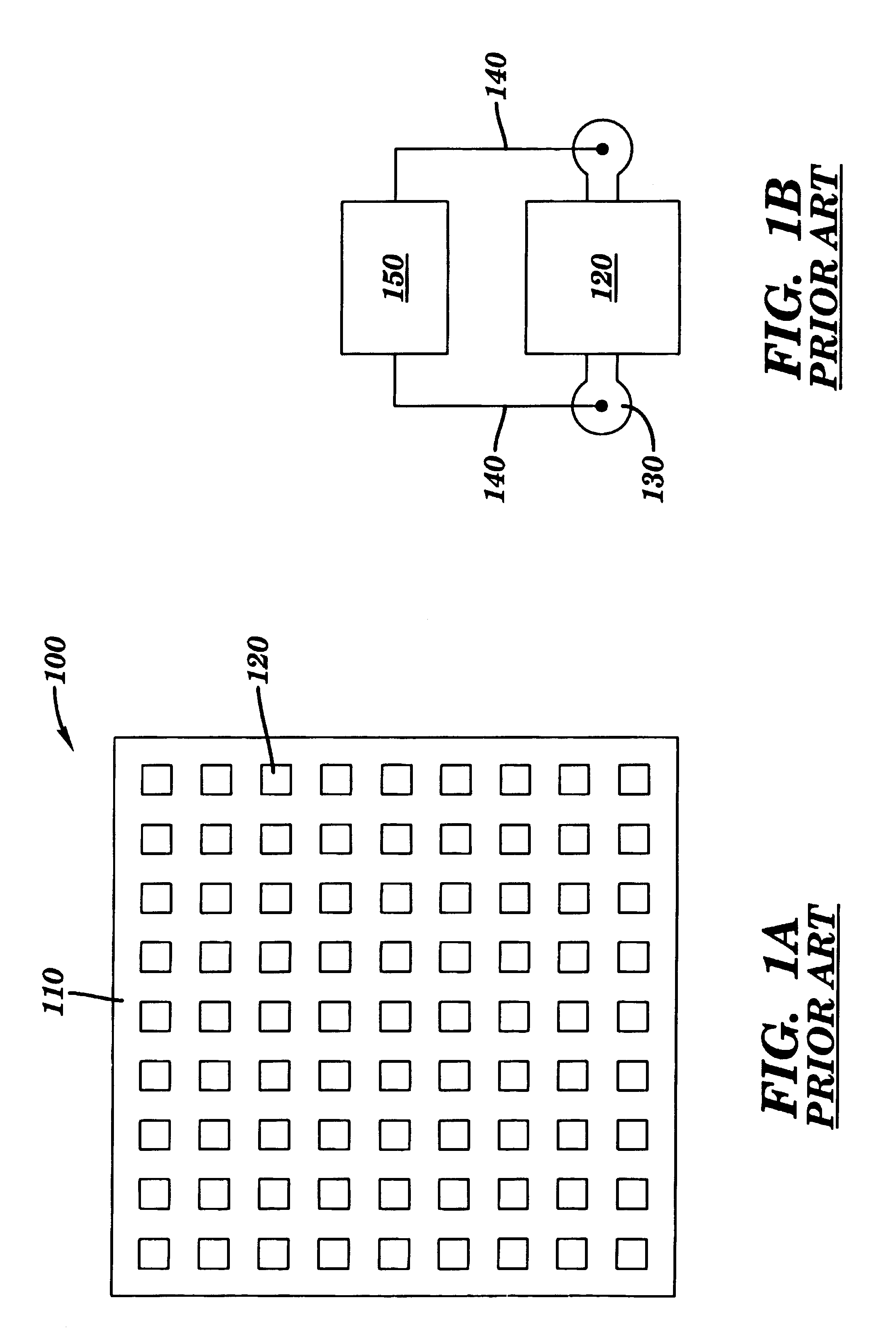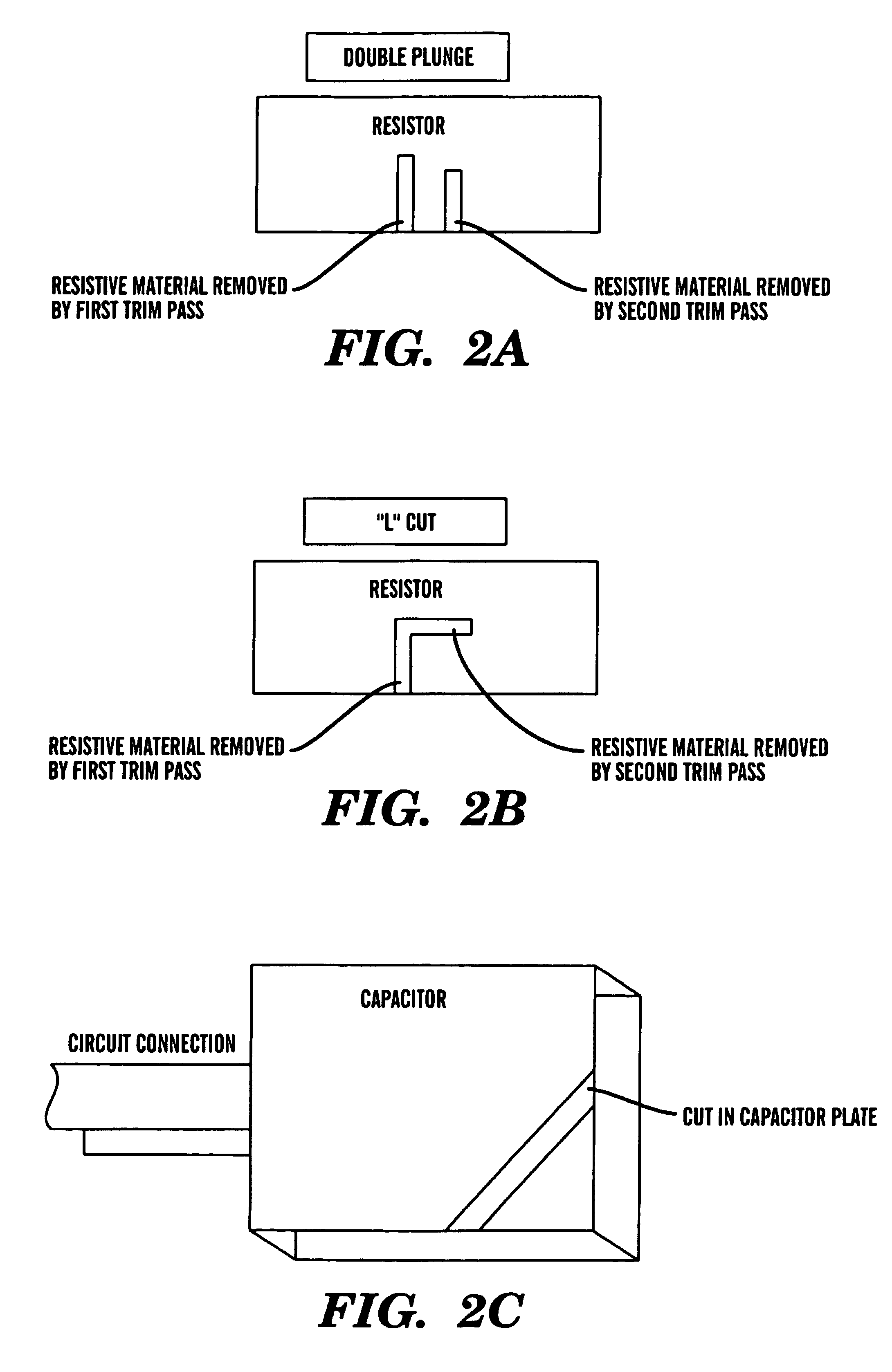Drift-sensitive laser trimming of circuit elements
a laser trimming and circuit element technology, applied in the field of trimming elements, can solve the problems of falling outside the desired range, difficulty in controlling and predicting the electrical characteristics of deposited or etched elements, and the cost of fabricating embedded resistors is lower than the cost of separately fabricating and mounting the surface, and achieves the effect of high throughput of trimmed pcb panels
- Summary
- Abstract
- Description
- Claims
- Application Information
AI Technical Summary
Benefits of technology
Problems solved by technology
Method used
Image
Examples
case 2 or case 3
In case 2 or case 3, certain somewhat optimized trimming process factors for mitigating drift might have been selected by chance. For example, if there was some other reason to select a particular cut type, that cut might provide some optimization. However, even if this were the case, additional speed or yield improvements may still be achievable by selecting the best trim type or by optimizing another trimming process factor, such as the heat input by the laser beam to the element during trimming, to increase the process margin.
case 5
is a particularly interesting example of an implementation in which no drift is allowed after lamination. As shown, initial indications are that untrimmed resistors have negative drift of about 4% after lamination. Laser trimmed resistors have positive, e.g. 4% to 8%, post-lamination drift. Thus, by choosing the correct trimming parameters the final drift can be reduced to substantially 0%.
It will be recognized that the trimming may be performed in multiple phases. That is, all passive elements may first be subjected to a rough trimming and then be subjected to a fine trimming after the rough trimmed elements have cooled.
Following determination of trim (cut) speed (bite size, spot size, and repetition rate) in step 1615, operations continue with FIG. 17. In step 1701 the position of the element in relation to the any conductors (copper traces) is determined. Typically this is done by doing a global alignment (3 or 4 point alignment) to determine where the conductors are located, and...
PUM
| Property | Measurement | Unit |
|---|---|---|
| wavelength | aaaaa | aaaaa |
| thickness | aaaaa | aaaaa |
| temperature | aaaaa | aaaaa |
Abstract
Description
Claims
Application Information
 Login to View More
Login to View More - R&D
- Intellectual Property
- Life Sciences
- Materials
- Tech Scout
- Unparalleled Data Quality
- Higher Quality Content
- 60% Fewer Hallucinations
Browse by: Latest US Patents, China's latest patents, Technical Efficacy Thesaurus, Application Domain, Technology Topic, Popular Technical Reports.
© 2025 PatSnap. All rights reserved.Legal|Privacy policy|Modern Slavery Act Transparency Statement|Sitemap|About US| Contact US: help@patsnap.com



